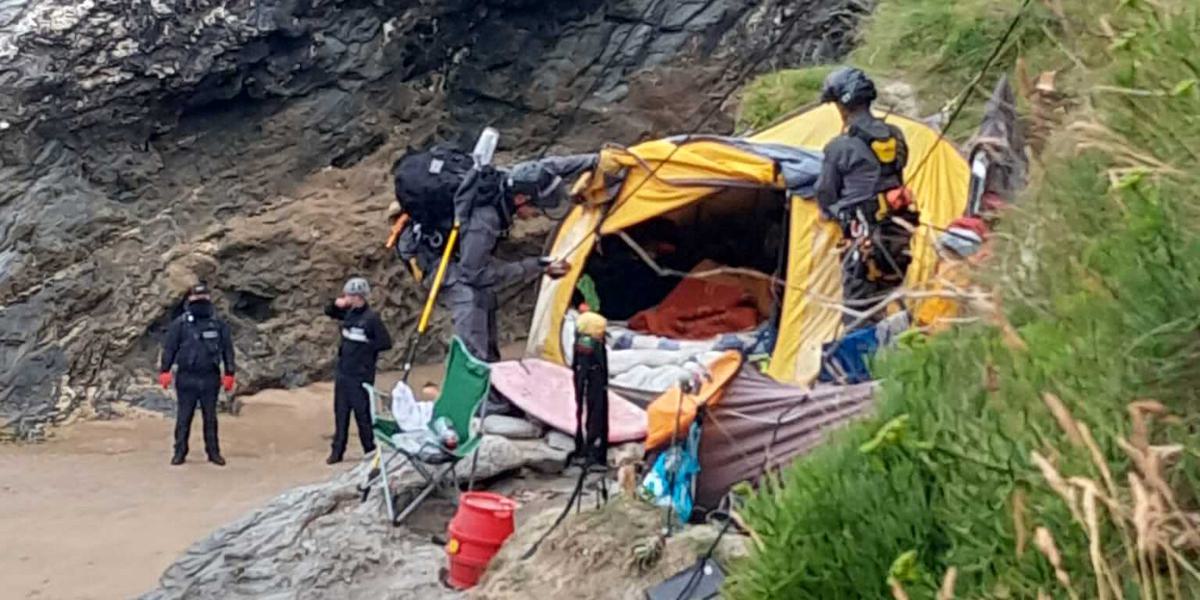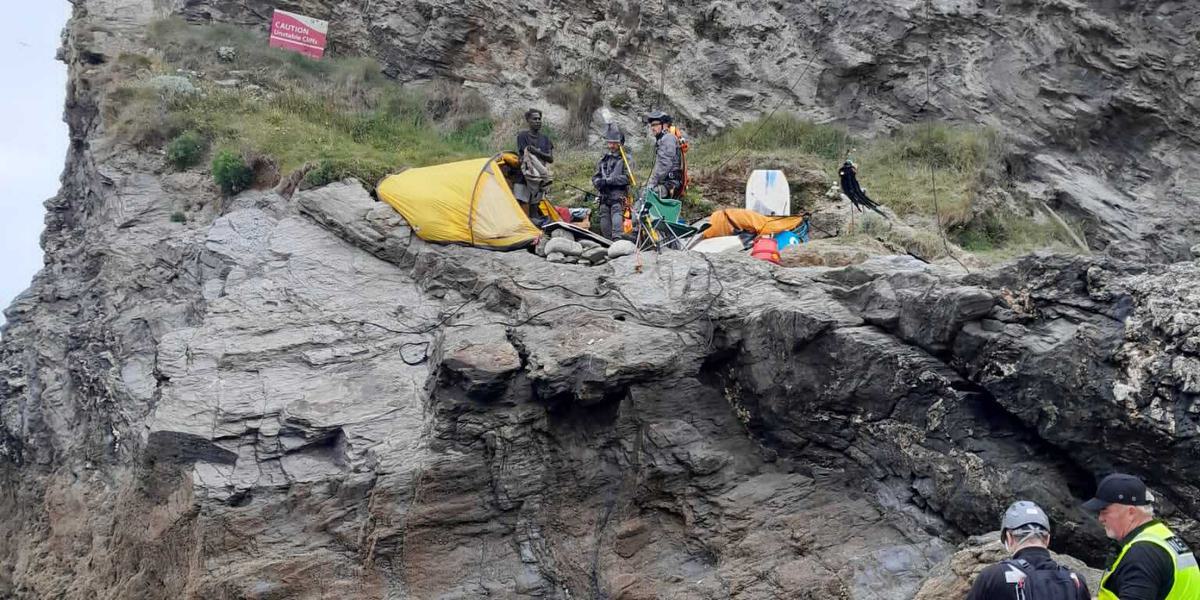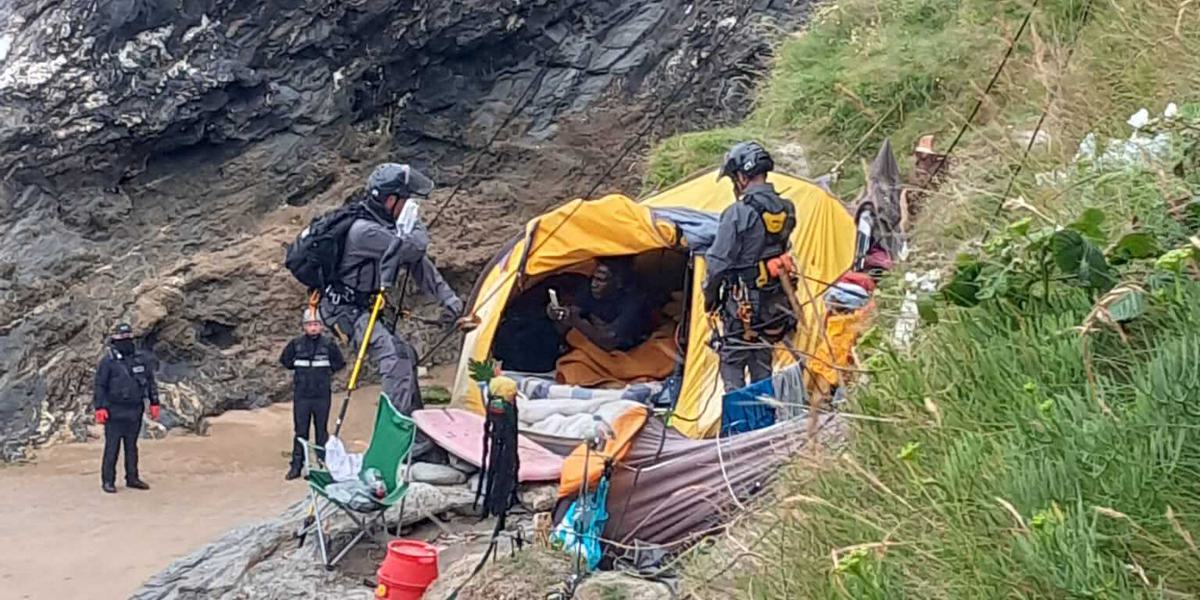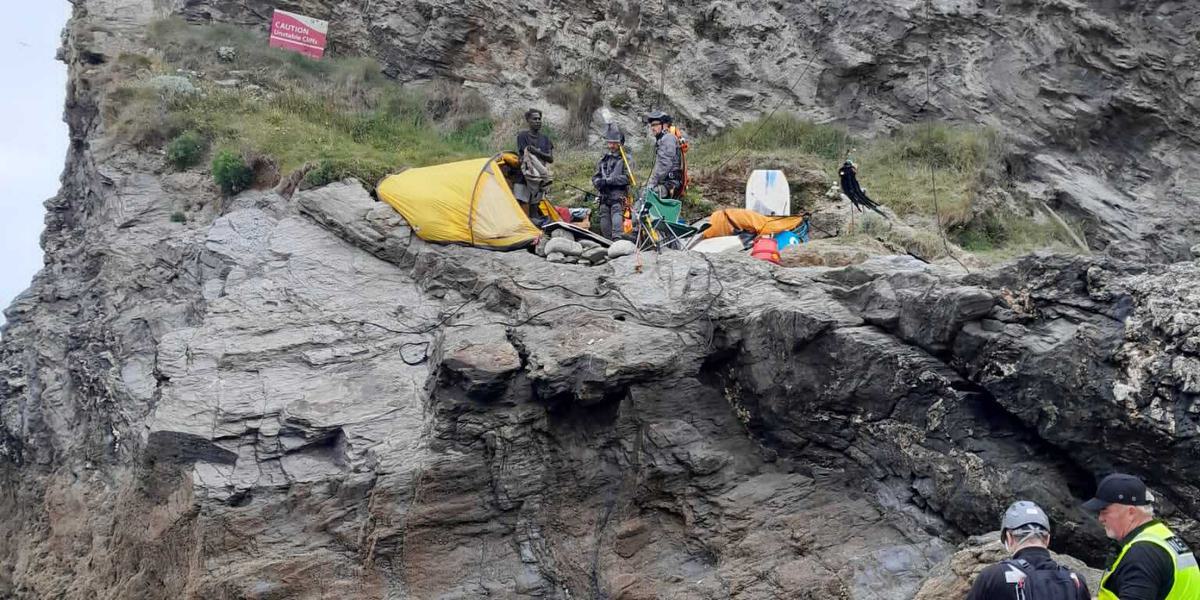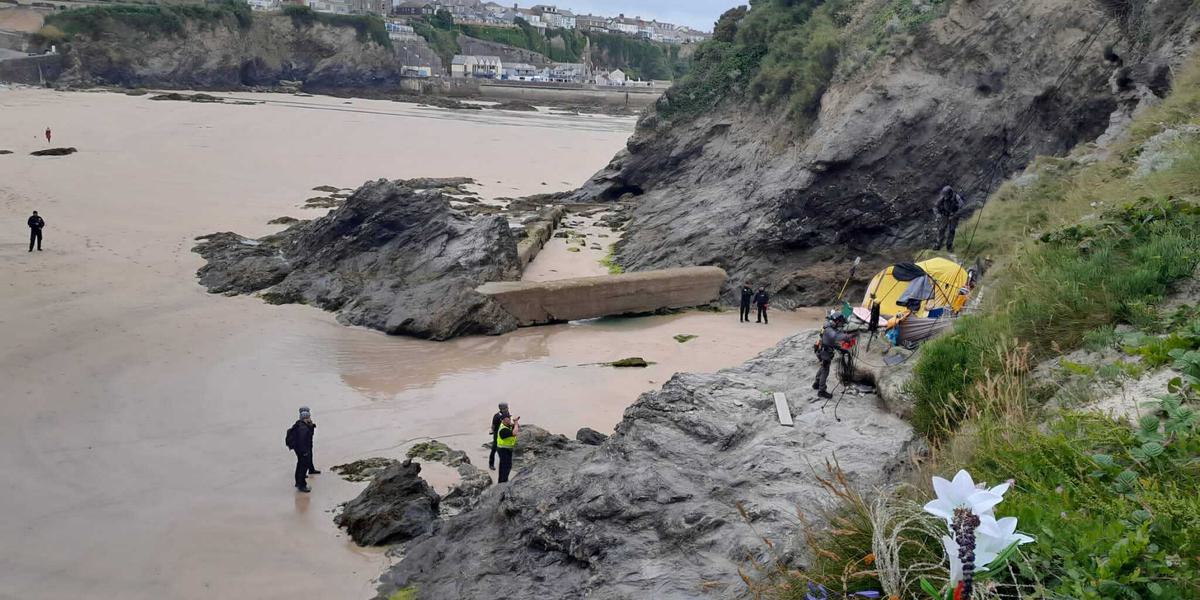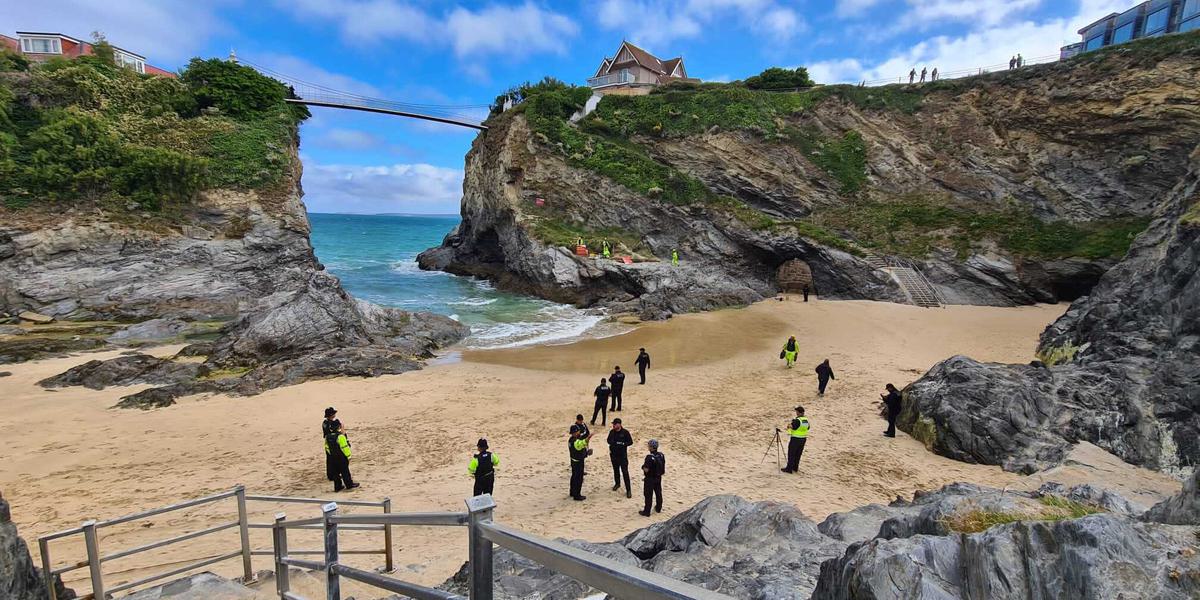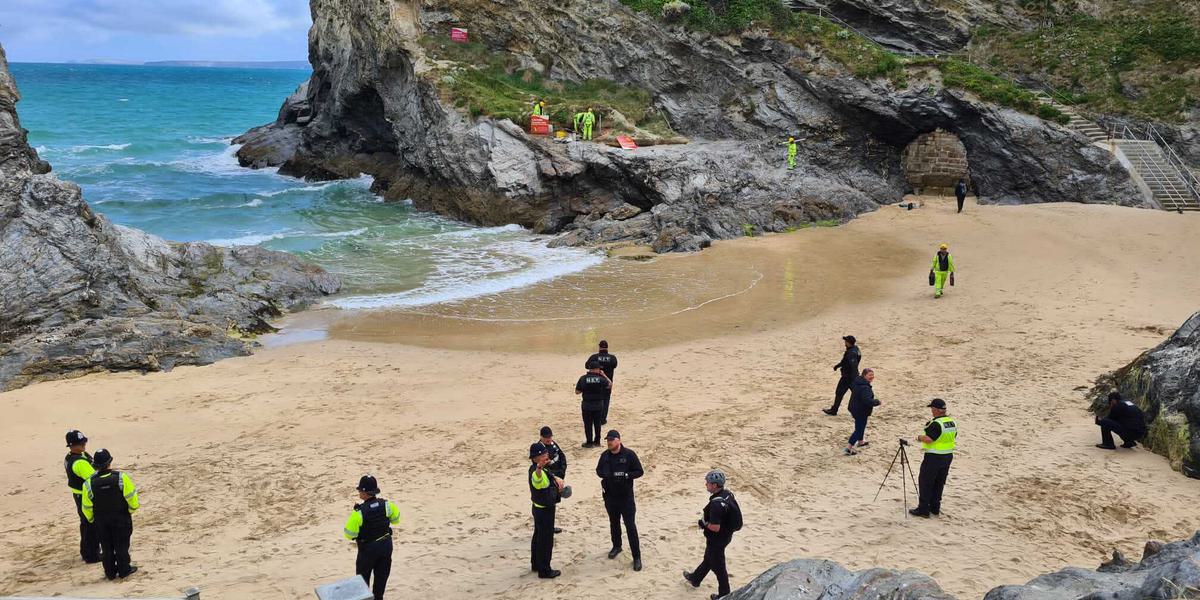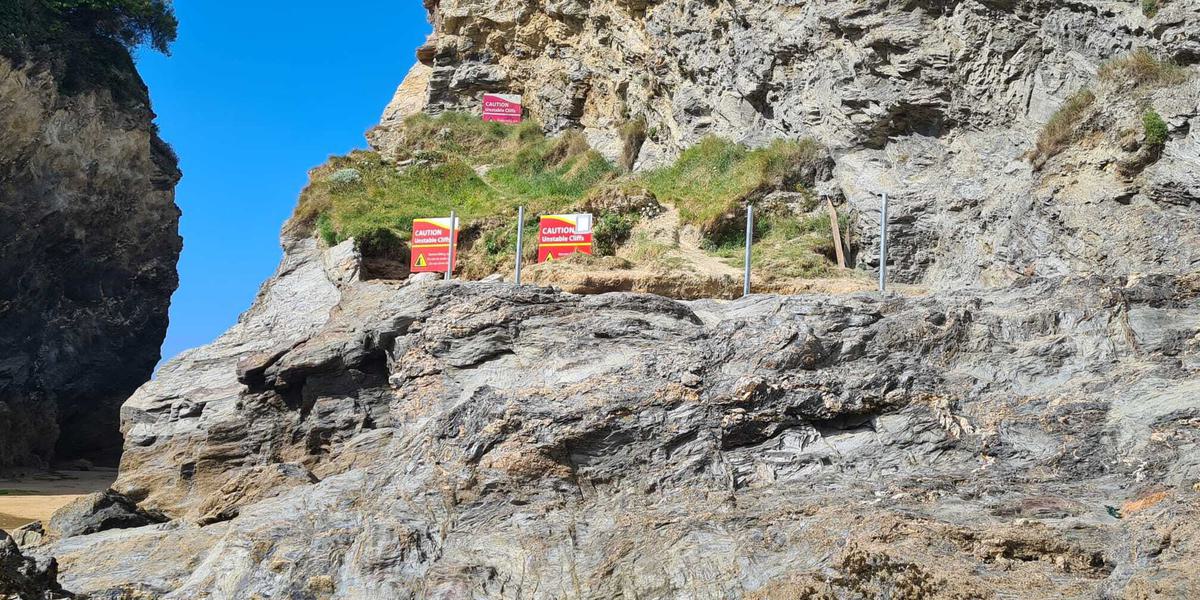Cliff edge writ of possession eviction
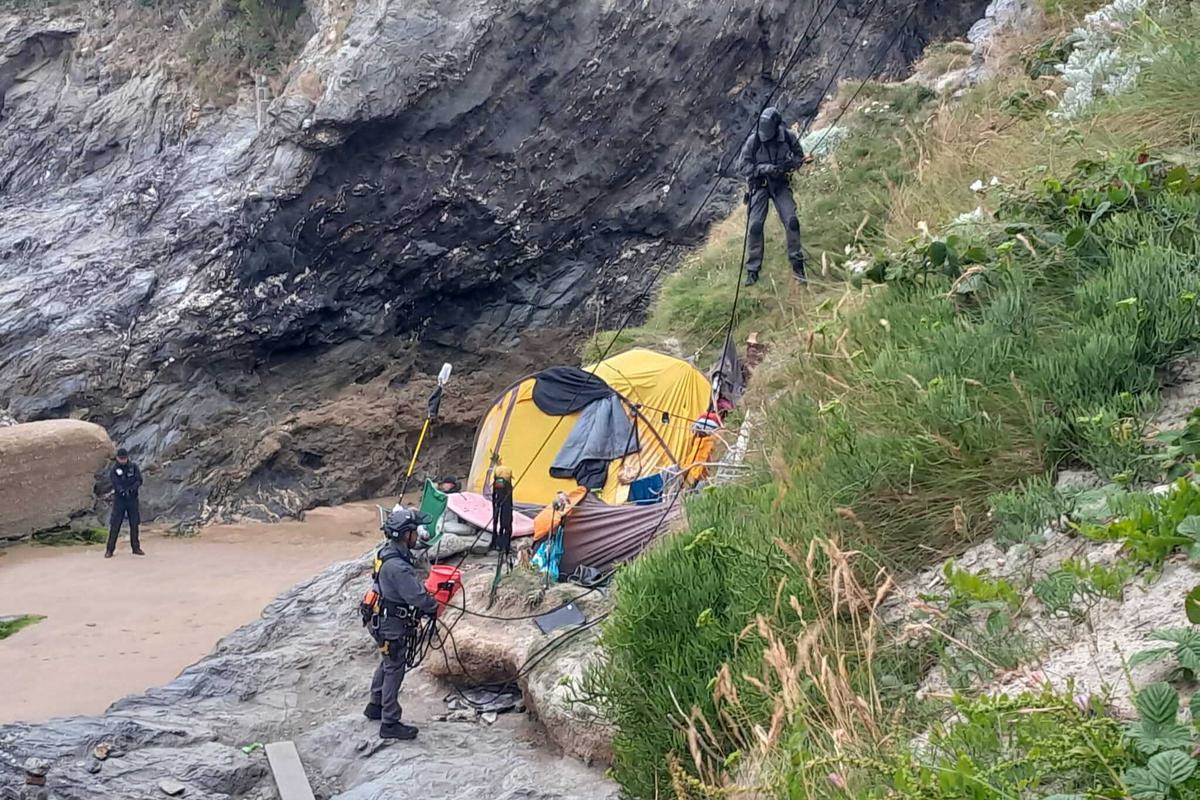
A homeless man, who had refused several offers of accommodation, recently decided to pitch his tent on a narrow ledge three metres up a sheer cliff face in a Cornish cove.
The National Eviction Team was called in by the local authority to safely get him down under a writ of possession. We put our response together very quickly, with an initial plan in one day and full plan after we went on site to complete preparations.
Drunken dancing on the cliff face
Just before we arrived on site, half a dozen people, who had just been removed from illegally camping on a nearby beach, had decided to join him on the cliff face, making the situation even more dangerous and volatile.
They were drinking, behaving aggressively and dancing precariously on the cliff ledge. An accident waiting to happen.
Planning the operation
When planning for any operation, safety is of paramount importance. In this case, our priority was the safety of the people on the cliff face, our team on the beach and our climbers at the top of the cliff.
This removal was planned to the same level of detail as we would do for a tunneller action because of the water hazard, the weather risks and the fact that we needed our specialist climbing team to work at height.
It had to be managed very carefully from the Public Order Act perspective. Given that this was during the summer in a popular tourist county, the police and fire brigade were already busy, so they provided us with local officer support and were on standby should greater involvement be required (which it wasn’t).
We put a number of teams in place to manage the eviction:
- Quick response team at the top of the cliff
- Quick response team at the bottom of the cliff
- Climbing team
- Flying team, who’s remit was to work to maintain public order and prevent inquisitive members of the public from approaching the site
- Evidence gathering team, filming the eviction
- Lock on team, although fortunately they weren’t required
Undertaking the eviction
The eviction under a writ of possession was undertaken in one day. We started in the early morning to catch the tide on a day when there was a neap tide. We were finished by 11:30 am before the tide came back in, so we removed the risk of accidental falls into the sea.
One of our team, a trained negotiator, talked to the original cliff camper and persuaded him to allow our climbing team to bring him and the others down. As the others who had joined him were following his lead, they also agreed.
Our climbing team then abseiled down the cliff face, hooked up the campers to harnesses and safely lowered them down to the beach below. The climbing team then went back up and brought down all the campers’ possessions.
Client feedback
The client was keen to express his compliments for the professionalism and effectiveness of the enforcement team in today's successful enforcement operation. He described himself as impressed by the manner in which the operation was conducted and said that he now understood fully why we had deployed the specific teams in the planned manner in order to assure a safe and effective conclusion. He also expressed his thanks to the team for being available after the main operation to ensure that the occupants and their associates did not return to the site.
Preventing reoccupation
Our client did not want him coming back, perhaps using his equipment as an excuse to return, so they asked us to put his possessions into secure storage and liaise with him for their return, as per the Torts (Interference with Goods) Act 1977.
Whilst our client was installing posts and fillers into the cliff face to prevent anyone else camping there, they asked for some of our agents to stay on, This proved a good call, as more people turned up intending to join the camp and our agents were there to prevent them from coming onto that area of the beach.
Finally, the local authority thoroughly discouraged the campers from returning or trying something similar elsewhere in Cornwall or in Devon next door, letting them know that the National Eviction Team would be appointed to once again remove them.




